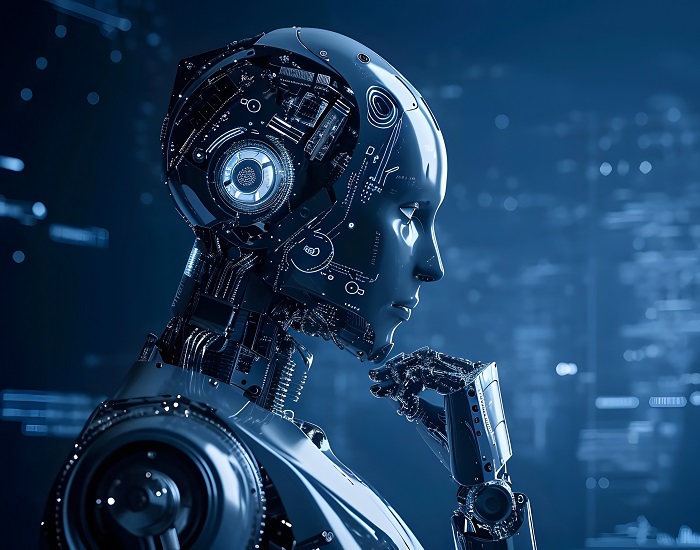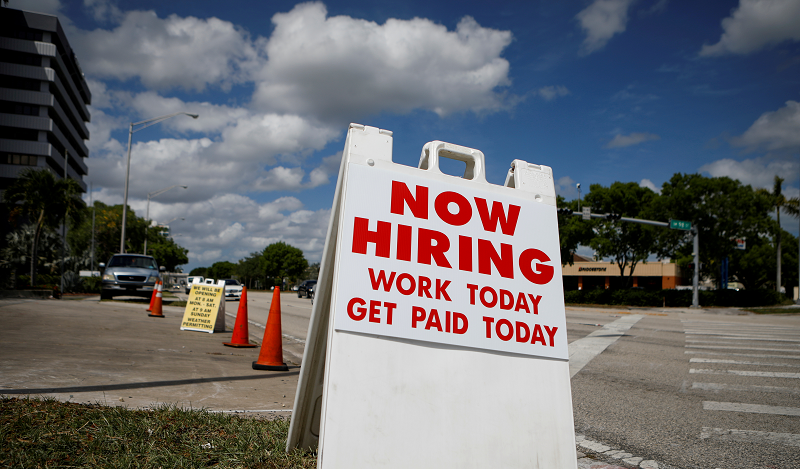
June 11, 2025
From Engineers to Fast Food, How AI Is Rocking the Future of Jobs
The future is here, and it requires robust AI literacy and support for workers and families. Artificial intelligence development and deployment is accelerating, and so are the ironies. A recent report by Great Learning found that a growing number of Indian engineers — a group deeply involved in creating and deploying AI — are pessimistic about how…

May 2, 2025
Without Qualified Workers, Our CHIPS Investments Could Be Money Down the Drain
Three years ago, the Biden administration, backed by big bipartisan majorities in Congress, launched the CHIPS and Science Act to revitalize domestic semiconductor manufacturing. After decades of outsourcing that reduced the U.S. production share of advanced chips from 37 percent to 10 percent, this “industrial policy” investment was justified as necessary for national security and as a measure to reinvigorate…

May 1, 2025
Tariffs Plus AI Makes for a Rocky Job Market. How Should Workers Prepare?
In today’s labor market, few occupations are safe from AI disruption. It’s been a rough month for hiring plans. The market volatility ignited by President Donald Trump’s tariff policies has made business planning difficult, and that includes any intentions of hiring. Combined with the accelerating adoption of artificial intelligence, disruptions to the labor market don’t…

March 12, 2025
Stop and Go
Automated driving is picking up speed. Several years ago there was a bit of a moral panic about the prospect of automated freight transportation replacing human truck drivers. These concerns were, in part, about the prospect of automating yet another large and important industry that was dominated by noncollege, male workers. The issue faded from…

March 6, 2025
America’s New Frontier of Opportunity and Inclusion
It would be a king-sized understatement to say that diversity, equity, and inclusion (DEI) initiatives have had better weeks, months, years, and decades than they are currently experiencing. From the Supreme Court’s ruling that banned affirmative action in admissions, to the Trump administration’s full-scale bureaucratic offensive to expunge DEI from federal policy and programs, to corporate America’s widespread retreat from years…

February 25, 2025
Go Fast, Break HR
How the AI talent race is reshaping recruitment. A new survey of 250 technical leaders reveals a striking paradox: Companies are dramatically increasing AI investments—some by up to 75 percent in 2025—while simultaneously finding a talent well that is running dry. Ninety-four percent of tech leaders identify talent shortages as their primary barrier to AI innovation, and…

February 11, 2025
AI and the Future of Work Looks Bright
One of the hottest guessing games in workforce development is figuring out how generative artificial intelligence will affect jobs and how to prepare students and workers for an AI-infused economy. The future of work looks bright, but the full potential of AI to increase productivity and raise wages and incomes will only be realized if…

January 7, 2025
Ozempic and Your Community
As holiday treats give way to New Year’s Resolutions, the names of GLP-1 weight-loss drugs like Ozempic and Wegovy will be on millions of lips this January—in addition to any leftover fruitcake, eggnog, cookies, and latkes. But the benefits of these drugs aren’t limited to what they can do for an individual’s health. Recent analysis…

January 2, 2025
AI Will Have a Major Impact on Labor Markets. Here’s How the US Can Prepare
The nation can do better at forecasting AI-driven job and skill changes, including with a data-focused nonprofit that examines the technology’s impact. Markets are the killer app for efficiently organizing unfathomably complex human activities to deliver innovation and prosperity. They can also shift suddenly, creating winners and losers, even as broad measures of economic health…

November 27, 2024
Finally, a Win for Working Men
Since the 1970s, working men, particularly those without college degrees, have experienced lower employment rates, increased social isolation and growing health risks. Today, we are starting to see early signs that this problem may be abating. But lately, men have started going back to work. During most recessions, the male employment rate falls and never returns…